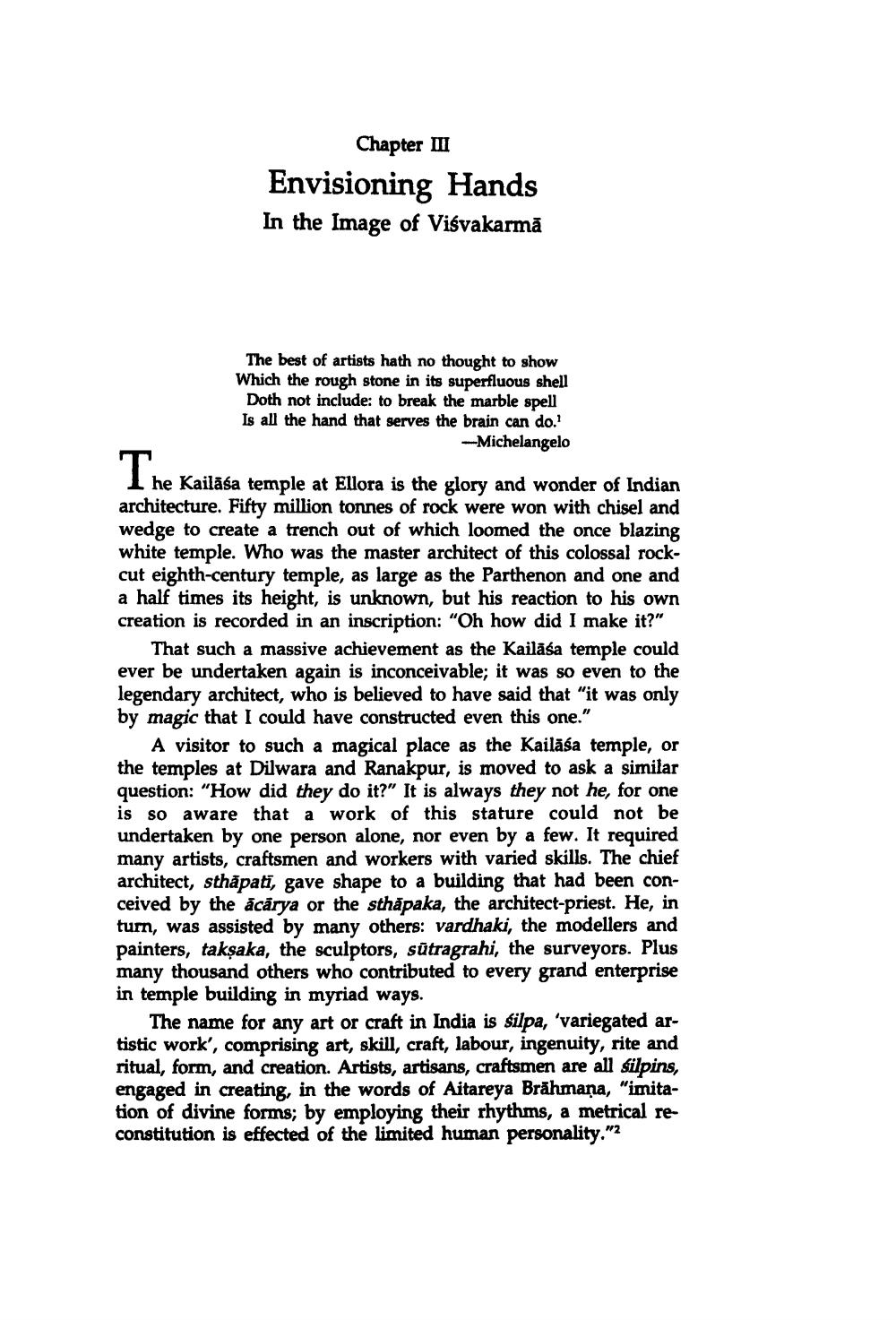________________
Chapter III
Envisioning Hands
In the Image of Viśvakarmā
The best of artists hath no thought to show Which the rough stone in its superfluous shell Doth not include: to break the marble spell Is all the hand that serves the brain can do.' -Michelangelo
The Kailasa temple at Ellora is the glory and wonder of Indian
architecture. Fifty million tonnes of rock were won with chisel and wedge to create a trench out of which loomed the once blazing white temple. Who was the master architect of this colossal rockcut eighth-century temple, as large as the Parthenon and one and a half times its height, is unknown, but his reaction to his own creation is recorded in an inscription: "Oh how did I make it?"
That such a massive achievement as the Kailasa temple could ever be undertaken again is inconceivable; it was so even to the legendary architect, who is believed to have said that "it was only by magic that I could have constructed even this one."
A visitor to such a magical place as the Kailāśa temple, or the temples at Dilwara and Ranakpur, is moved to ask a similar question: "How did they do it?" It is always they not he, for one is so aware that a work of this stature could not be undertaken by one person alone, nor even by a few. It required many artists, craftsmen and workers with varied skills. The chief architect, sthāpati, gave shape to a building that had been conceived by the acarya or the sthāpaka, the architect-priest. He, in turn, was assisted by many others: vardhaki, the modellers and painters, takṣaka, the sculptors, sūtragrahi, the surveyors. Plus many thousand others who contributed to every grand enterprise in temple building in myriad ways.
The name for any art or craft in India is silpa, 'variegated artistic work', comprising art, skill, craft, labour, ingenuity, rite and ritual, form, and creation. Artists, artisans, craftsmen are all silpins, engaged in creating, in the words of Aitareya Brāhmaṇa, "imitation of divine forms; by employing their rhythms, a metrical reconstitution is effected of the limited human personality."2




